How can peppers be tied up?
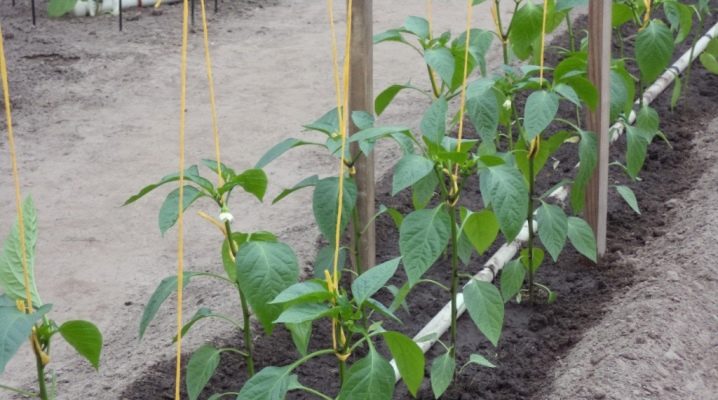
If you plan to plant pepper in your summer cottage, you should remember that there are many nuances of caring for this crop. The garter of plants deserves special attention.
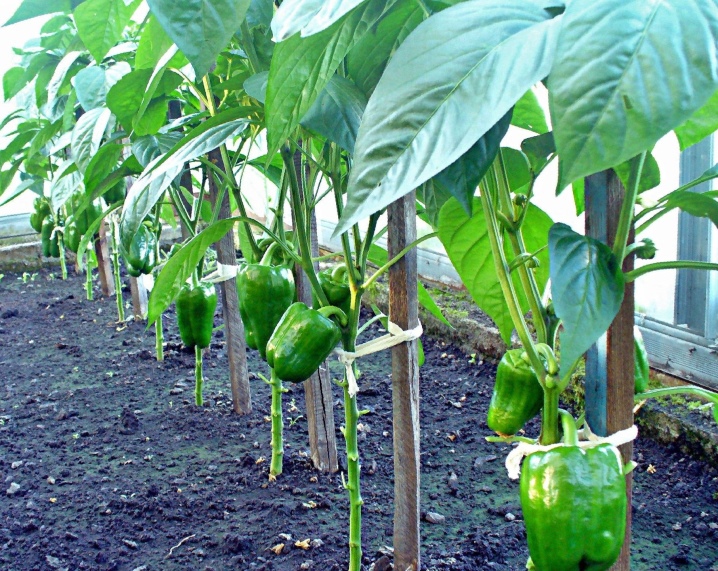
The need for a procedure
Low-growing varieties, as a rule, do not need a garter. But for tall and hybrid varieties, it is necessary. On average, a pepper bush can stretch up to 1 m in length, there are varieties whose length can reach 1.5 meters.
Without such a procedure, weaker stems can bend and break severely.... As soon as the stem begins to deviate to the side under the weight, it must be fixed. Most often, by this time, the vegetation reaches a height of only 45-50 centimeters.

In addition, additional support will help protect the crop from wind gusts, which is especially important for young plantings.
Greenhouse garter
To begin with, consider how to correctly and quickly tie up peppers in greenhouses and greenhouse structures. The most common method of securing such a culture in greenhouse conditions is a horizontal trellis, with this method, under the roof of buildings, a rope is tightly fixed from twine or from strong wire.
Next, strong and thick wires are tied to the stretched material on the line of each plant. Moreover, this must be done so that the knot turns out to be a little loose, the thread should easily move... This will make it possible to change the level of the fixatives during the growth of the pepper.
The ropes are tied to the main stems of the plants just below the fork. This will fix other stems as well. The nodules on the pepper should not be too tight because the stem will grow as it grows. An overly strong hold can simply break it.
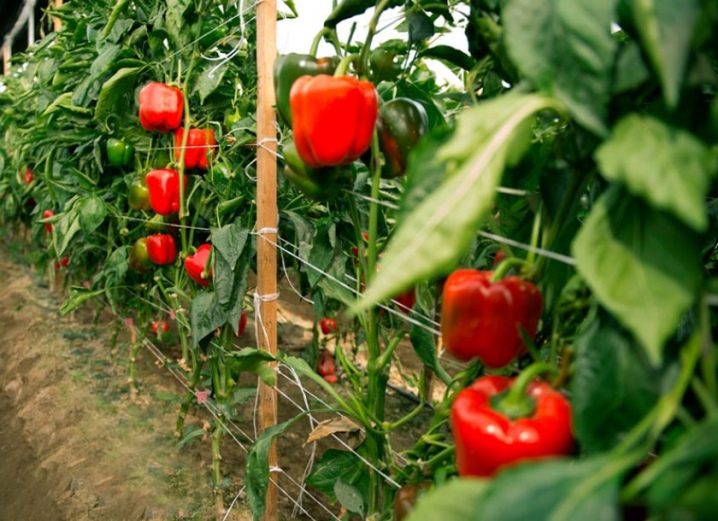
It should be remembered that the binding of bell peppers in a greenhouse can be carried out only after mulching and hilling.
Open ground methods
Crops growing outdoors in open soil will also need a garter. However, there are various ways to accomplish this procedure. The simplest option is the peg method. Their length should be about 1.5-1.7 m.
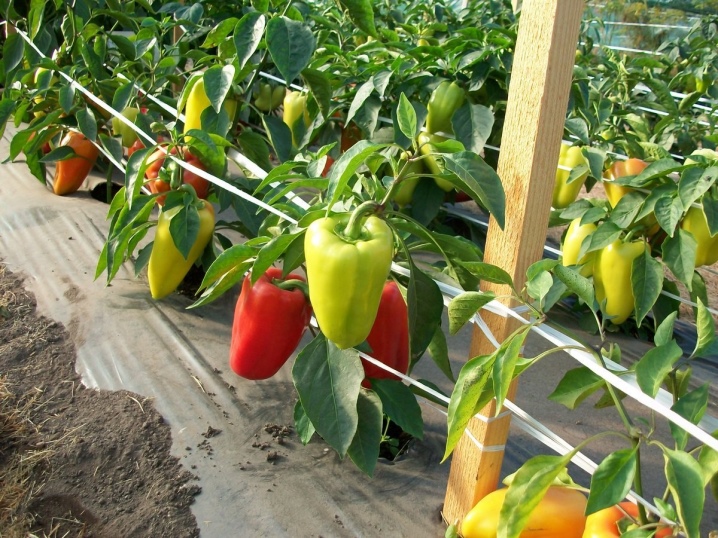
The lower part of the pegs is pre-sharpened. This is done in order to provide a stronger fixation in the soil. Later, these supports are driven into the ground. In this case, it is necessary to leave free space between them so that they can withstand the mass of peppers.
On one bed of small length, 2 pegs are most often installed (one at each end). If the beds are too long, then it is better to install another additional support in the middle to ensure a stable fixation of the vegetation.
Further, a nail can be driven into the upper part of the pegs. This is done in order to easily and conveniently fix the twine on it. The rope is pulled as tightly as possible from one support to another.
The rope line should run strictly above the pepper bushes located below. Next, you should check that the structure is sufficiently reliable and stable.... After that, you need to cut the twine, and attach the resulting segments to the main rope.
As a result, the segment with one end will be fixed on the previously stretched rope, and with the other end - in the middle of the stem. The culture should be tied up as carefully and carefully as possible so as not to break the plants. Most often, a figure-of-eight knot is used for a garter.
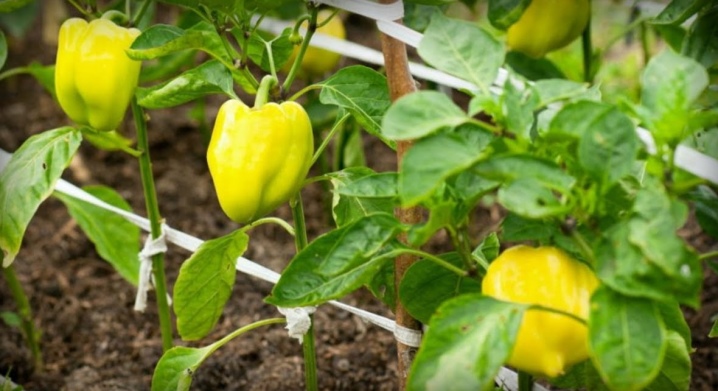
Sometimes the pegs are used separately for each bush. Moreover, they should be fixed in the soil at the moment when young seedlings are transplanted into the ground. In this case, the possibility of damage to the root system by stakes will be minimal.
Supports should not be placed too close to bushes... There should be a distance of about a couple of centimeters from the stem to them. It is necessary to fasten the stems of the bushes as carefully as possible. They should not be overtightened, otherwise they may simply break.
Various products can be used as a retainer. Often, wire, unnecessary pieces of fabric or twine are taken.
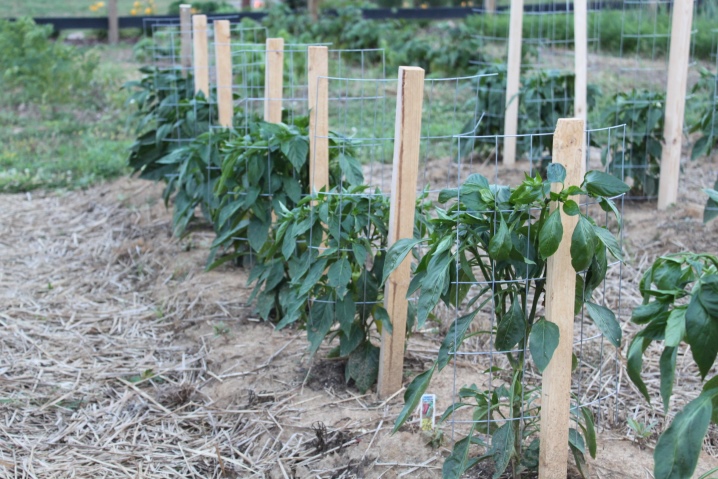
For varieties in which the green parts become too spreading as they grow and develop, a circular garter is used. According to this scheme, all fruiting stems are tied to a strong and reliable support at once. In this case, it is impossible to twist the shoots of plants, they must have their natural direction of growth. The circular garter can be used both in open soil and in greenhouse and greenhouse structures.
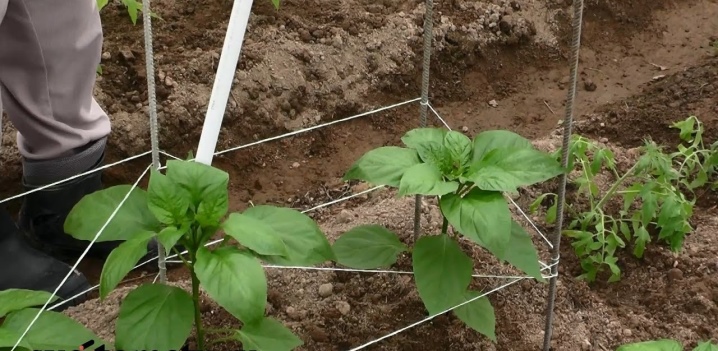
There are some important nuances when tying peppers.
- In order for the harvest to be as plentiful and healthy as possible, all growing stems and leaf blades of already attached vegetation are removed. Also, after the garter, the first inflorescence is pinched off. All this will make it possible to maximize the number of vegetables.
- During tying, the two strongest stems can be selected and kept... When a young vegetable appears on a less strong shoot, the stem must be pinched off a little higher than the pepper, this will allow only fruitful healthy shoots to be left in the future.
- When tying, it is better to slightly pinch the upper parts of the shoots.... This is done in order to speed up the ripening period of vegetables as much as possible, to increase their volume. But in any case, all fruit-bearing shoots left in the garden will need a garter.
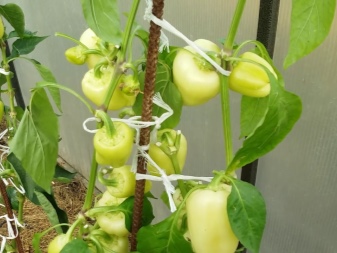
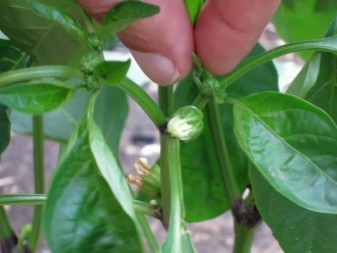













The comment was sent successfully.